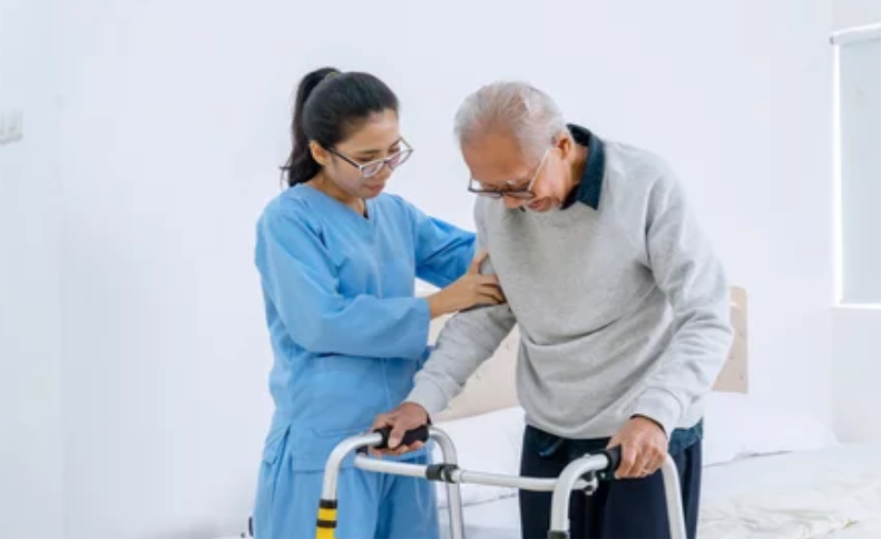You don’t have to go through your life struggles alone.
Reach out today.
Welcome to Best Physiotherapist in Delhi
Experience the Best Physiotherapist in Dwarka, Delhi and most advanced physiotherapy and rehabilitation facility in Delhi, where we offer a wide range of personalized physiotherapy services. Whether you're recovering from an injury, managing a chronic condition, or seeking to enhance your overall well-being. Our skilled physiotherapists are here to help.
Start your Recovery Journey Now
Conditions We Treat








Welcome to Dr. Dharam Pandey and Team, the forefront of transformative and team of best physiotherapist in Delhi. With over three decades of expertise, our compassionate professionals provide personalized care in a state-of-the-art facility. We empower individuals to reclaim vitality and thrive, fostering well-being in a warm, welcoming atmosphere. Explore our services and meet our skilled team for a healthier, vibrant life.
Best Physiotherapist in Dwarka
Welcome to the premier destination for physiotherapy in Dwarka. Whether you’re dealing with chronic back pain, recovering from a stroke, or seeking specialized care for conditions like sciatica or paralysis, our team of highly trained physiotherapists is here to provide you with world-class treatment. Our state-of-the-art physiotherapy clinic in Dwarka offers personalized care, ensuring a speedy and sustainable recovery.
Why Choose Us as the Best Physiotherapy Clinic in Dwarka?
Choosing the right physiotherapy centre is critical for effective treatment. Here’s why patients trust us:
- Experienced Team: Our team comprises the best physiotherapists in Dwarka, equipped with extensive training and expertise in treating a wide range of conditions.
- Advanced Techniques: From manual therapy to neurological rehabilitation, we utilize best of technology, evidence-based practices tailored to your unique needs.
- Comprehensive Care: We provide services for back pain, sciatica, stroke rehab, BPPV, and more.
- Convenient Locations: Our physiotherapy centres in make it easy for you to access expert care.
Comprehensive Physiotherapy Services
Back Pain Treatment in Dwarka and Janakpuri, Delhi
Back pain is one of the most common complaints we address. Our specialists offer targeted interventions, including:
- Manual Therapy: Relieves muscle tension and improves mobility.
- Posture Correction: Prevents further strain and discomfort.
- Strengthening Exercises: Focuses on core stability to support your spine.
- If you’re looking for a back pain doctor in Dwarka, and Janakpuri, Delhi our physiotherapists are here to help you regain a pain-free life.
- Neurological Physiotherapy
- Conditions like strokes, paralysis, and BPPV require specialized care. Our stroke rehabilitation in Dwarka and Janakpuri, Delhi involves:
- Mobility Training: Helping patients regain their ability to move independently.
- Balance Exercises: Essential for those recovering from strokes or dealing with vertigo.
- BPPV Treatment: Our expert team provides effective maneuvers to alleviate dizziness.
Physiotherapy for Sciatica and Paralysis
Living with sciatica or paralysis can be challenging, but our comprehensive care can make a difference. We provide:
- Nerve Mobilization: Reduces pain by improving nerve flexibility.
- Strength Rebuilding: Helps restore muscle strength and function.
- Functional Training: Enables patients to regain independence in daily activities.
Home Physiotherapy Services in Dwarka
Can’t visit our clinic? No problem! Our physiotherapy at home in Dwarka ensures you receive the best care in the comfort of your home. Ideal for elderly patients or those with mobility restrictions, this service includes personalized treatment plans tailored to your needs.
Specialized Care for BPPV and Vertigo
Benign Paroxysmal Positional Vertigo (BPPV) can disrupt your daily life with symptoms of dizziness and imbalance. Our team specializes in neurological physiotherapy to provide effective relief. Key treatments include:
- Canalith Repositioning Maneuvers: Designed to relocate displaced calcium crystals in your inner ear.
- Balance Training: Restores equilibrium and confidence in movement.
- Vestibular Rehabilitation: Helps improve coordination and reduce dizziness.
Chiropractic Services in Dwarka
If you’re searching for a chiropractor in Dwarka, and Janakpuri, Delhi our clinic offers spinal adjustments and manipulations to alleviate pain and improve alignment. Chiropractic care is particularly beneficial for back pain, sciatica, and posture issues.
Our Locations
We serve patients across Dwarka, including:
- Physiotherapist in Dwarka
- Physiotherapist in Janakpuri
Our conveniently located centres ensure you can easily access the best physiotherapy care near you.
Conditions We Treat
- Back Pain: Chronic and acute.
- Sciatica: Nerve pain radiating to the legs.
- Stroke: Comprehensive rehabilitation services.
- Paralysis: Neurological and functional recovery.
- BPPV and Vertigo: Specialized balance and vestibular care.
- Post-Surgery Rehab: Recovery from orthopedic or neurological surgeries.
Why We’re Recognized as the Best Physiotherapy Centre in Dwarka
Our commitment to patient care sets us apart. Here’s what makes us unique:
- Personalized Treatment Plans: Every patient receives a customized plan tailored to their specific needs.
- Cutting-Edge Technology: We use the latest equipment and techniques to ensure effective results.
- Compassionate Care: Our team goes the extra mile to ensure your comfort and recovery.
- Positive Patient Outcomes: Numerous success stories make us the go-to physiotherapy centre in Dwarka and Janakpuri, Delhi.
Book an Appointment Today!
If you’re searching for the best physiotherapist near me, look no further. Our team is dedicated to helping you achieve optimal health and mobility. Contact us today to schedule an appointment at one of our Dwarka physiotherapy centres, or opt for home physiotherapy services.
Frequently Asked Questions
Q: How do I find a good physiotherapist in Dwarka?
A: Look for a physiotherapy clinic with experienced professionals, positive reviews, and a wide range of treatment options. Our clinic meets all these criteria.
Q: What conditions can physiotherapy treat?
A: Physiotherapy can address back pain, sciatica, stroke, paralysis, BPPV, post-surgical rehab, and more.
Q: Do you offer home physiotherapy in Dwarka?
A: Yes, we provide physiotherapy at home services for patients who are unable to visit our clinic.
Q: What is the cost of physiotherapy in Dwarka?
A: Costs vary depending on the type of treatment required. Contact us for detailed pricing information.
Q: Can physiotherapy help with stroke recovery?
A: Absolutely! Our specialized stroke rehabilitation services focus on improving mobility, strength, and overall quality of life.
Discover why we’re the trusted choice for physiotherapy in Dwarka and Janakpuri, Delhi and beyond. Take the first step towards recovery by contacting us today!
Outpatients Services
Outpatient physiotherapy and rehabilitation services are provided to individuals who have suffered an…. READ MORE…
Inpatients Services
Inpatient physiotherapy and rehabilitation services are provided to individuals who have suffered an…. READ MORE…
Don’t let pain or limited mobility hinder your quality of life. Contact the best physiotherapist in Delhi today to schedule an appointment with the best physiotherapist in Delhi. Let us help you on your path to recovery and improved well-being.
- EXPERIENCED AND QUALIFIED STAFF
- PERSONALIZED TREATMENT PLANS
- STATE-OF-THE-ART FACILITIES
- COMPREHENSIVE SERVICES
- COMMITMENT TO EXCELLENCE